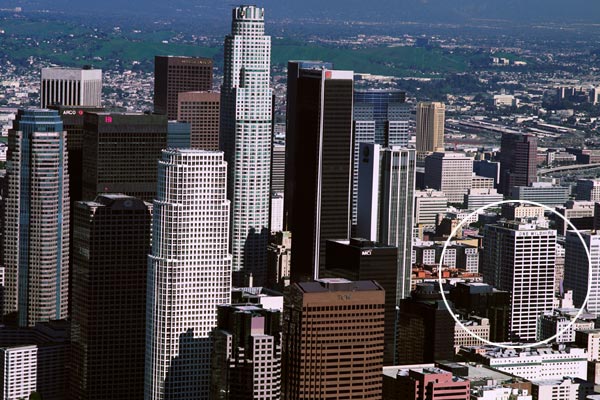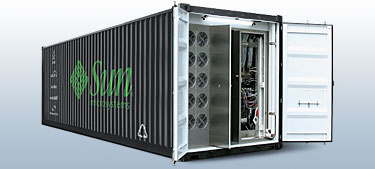

From the outside, it looks like an office building, but inside it is filled with racks of equipment and cables. Over 200 tenants connect with each other and the outside world at One Wilshire.
Large corporations and ISPs exchange traffic (IP packets) at data centers like this one. There are similar buildings in cities around the world.
In addition to exchanging traffic, data centers often host servers for organizations. The data center staff are responsible for connectivity, power, security, fire protection, etc., but not the content. The content is maintained by the owner of the server. (New material is transferred to the server using the FTP, the file transfer protocol). You would also have a fast connection to the Internet. This service is typically very good, but the price is high.
Sun Microsystems hopes to drastically cut that price with their Blackbox data center in a shipping container. They estimate a cost 1/10 that of a traditional data center with ten percent less power consumption and a setup time of one week. Google is also rumored to be working on a "portable" data center.

Governments often sponsor public exchange points in order to cut down on the need for international links. Without local exchange points, the ISPs in a developing nation may be forced to lease expensive lines to Europe or the US.
The Packet Clearing House maintains an exchange point directory.
Companies like Carrier Hotels, Band-X, and Bridgeone are brokers for organization connectivity, collocation and other services.